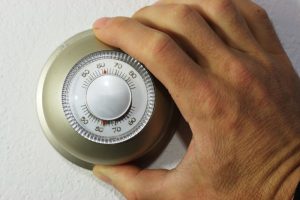
Although there are many advanced types of thermostats available today, many equipped with special Wi-Fi technology and multiple settings, they still operate on a basic principle: raise the temperature setting for a warmer house, lower it for a cooler one.
But if you handle your thermostat during the summer as if it were something you keep changing as gets too cold and then too warm, you’ll end up consuming more energy than necessary and see larger electric bills. You’ll also put more stress on the components of your air conditioner, potentially shortening its service life and making it more likely you’ll have to call for air conditioning service in Dover, Delaware to fix it during the summer.
We’re going to give you a quick course on the smart way to set your thermostat during the summer heat so you’ll save money and give your AC a life-extending break.
Understanding Heat Gain and Thermostat Operation
Before we get to the ideal settings for a thermostat during the summer, we need to explain two important concepts that will help you understand why these settings are energy-savers:
- Heat Gain: This is the movement of heat into a cooler area. When your house is cooler than the temperatures outside, heat will move into the house (slowed down by insulation). The greater the difference in temperatures between the inside and the outside, the faster the heat moves. So when you’ve got an icy indoors on a sweltering day, the heat gain from outside will be much faster. The closer the two set of temperatures are, the slower the heat gain.
- Thermostat Operation: A thermostat is a switch, not a throttle. When a thermostat is set lower, it doesn’t speed up the AC’s operating and provide larger volumes of cooling. What it does is leave the AC running for longer to meet the target temperature.
Putting It All Together—Raise the Thermostat Setting
Now let’s put these two bits of information together: you want to set your thermostat at a temperature that will lower the speed of heat gain and keep it set steadily because raising the temperature up and down won’t provide “more” cooling.
For the daytime when people are home, we recommend setting the thermostat at 78°F. This is a comfortable setting for most people, and it is warm enough to slow down heat gain so that the AC won’t need to keep constantly battling a flood of outside heat. Keep the thermostat at this setting throughout the daytime. During the evening or when the house is empty, raise the temperature by 8°F. (Yes, this includes periods when you’re away for extended periods; it’s helpful to keep the house from overheating and makes it easier to cool off when you come back.)
If 78°F seems too warm, you can lower the temperature to around 74°F, then raise it by a degree a day until people become used to it. Please don’t lower the temperature below 72°F, which will not only put too much stress on AC but can sometimes lead to coil freeze.
At Atlantic Refrigeration & Air Conditioning, Inc. “We Take Pride in Your Comfort!” Call us for the best in air conditioning service this summer.
